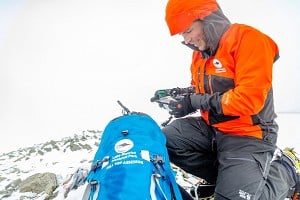In reply to RM199:
My usual thing is to rest until I feel roughly 75% not sore. My thought would be that if you are recovering completely between sessions then your body won't ever have to adapt and get stronger to deal with it, but obviously too much and your body is just playing catch-up with the damage you are inflicting on it and never getting stronger.
I think the consensus these days is shorter and more regular sessions will be better as you are never getting so deep in the 'dip' though someone will probably offer a contrary opinion so YMMV.
also, the 'no pain, no gain' thing is the most ridiculous thing that has ever existed, especially for climbing. Tendons just don't work like that. I spent an entire year over-training and 'pushing through the pain' when I was at 6a/+ trying to push my grade. Ended up with a bad case of tennis elbow in both arms which took me a year to get rid of. Once I started resting more, treating my body better (massaging with armaid, doing supplemental exercises, pushups etc) I got to climbing 7a fairly regularly within 18 months.
Lastly, what is your non-climbing life? If you are a bricklayer or something then that is just even more stress on those poor arms. Food for thought









